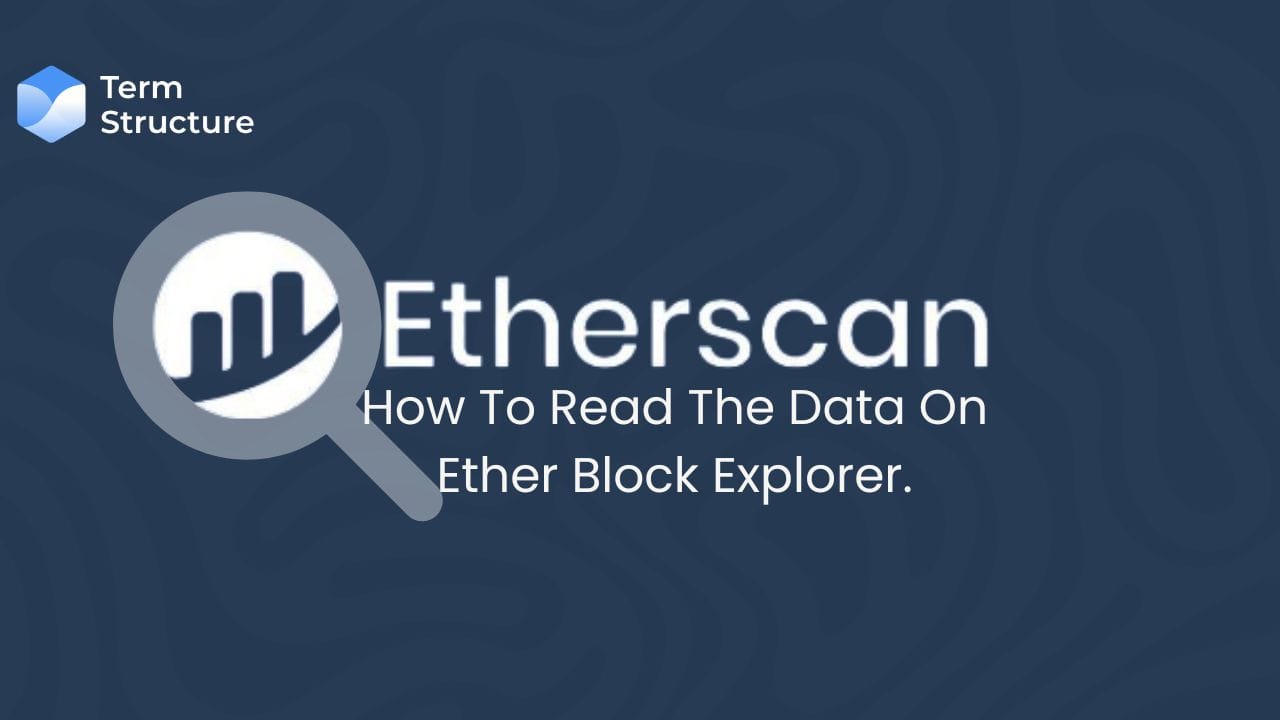How to Read Data On Etherscan?

Introduction
Etherscan is a Block Explorer and Analytics Platform for Ethereum, a decentralized blockchain that enables developers to build and deploy smart contracts and decentralized applications (dApps) without third-party interference. It was one of the earliest and longest-running independent projects created by Matthew Tan to ensure fair access to blockchain data for everyone. Users can use Etherscan to explore transactions on the Ethereum blockchain including transaction history, address information, block information, token information, smart contracts, and more.
In this article, we will delve into what Etherscan is, explore its use cases, and show you how to harness this immensely powerful tool to enhance your crypto .
What is a Blockchain Explorer on Etherscan?
A blockchain explorer is a tool that crypto investors, analysts, and enthusiasts use to access comprehensive information about a specific blockchain, including transactions, addresses, gas fees, and more. Each native blockchain and Layer 1 protocol typically has its own dedicated explorer. For instance, Binance Smart Chain uses BscScan, Base Blockchain is associated with BaseScan, Arbitrum has ArbiScan, and Optimism uses Optimistic Etherscan, among many others.
Now, let’s see how to navigate Etherscan to analyze this information.
An Overview of Etherscan
Homepage
The Etherscan landing page provides a comprehensive overview of the Ethereum network, featuring information such as the current ETH price, median gas price, transaction details, and hash rates. While this page serves as a valuable resource for high-level network insights, the true strength of Etherscan lies in its ability to offer detailed analysis of individual wallets and tokens.
Address Page
To navigate to an individual address page, use the search bar located in the top right-hand corner of the home screen. You can enter the address of any wallet or smart contract on the Ethereum blockchain. Once you input an address, you will be directed to its specific landing page.
An address page on Etherscan provides an overview of the assets associated with that address, including the Ether balance and the value of all ERC-20 tokens held. Additionally, the page features various tabs that categorize different types of transactions:
- Transactions: These are transactions initiated by external addresses, which are typically user wallets.
- Internal Transactions: These transactions are initiated by internal addresses, usually triggered by smart contracts.
- ERC-20 Transactions: This table displays any transactions involving ERC-20 tokens.
- ERC-721 Transactions: Similar to the ERC-20 transactions table, this section shows transactions involving ERC-721 tokens, which are generally associated with NFTs (non-fungible tokens).
Practical Use Cases of Etherscan
Explore Wallet Addresses
Etherscan enables users to explore Ethereum-based wallet addresses, making it easy to look up any wallet to see its holdings of ETH, various ERC-20 tokens like dydx or Tether, and NFTs (ERC-721 tokens). For a more detailed analysis, you can click on any transaction ID in the transaction history to access an individual transaction page. There, you'll find comprehensive details such as the ETH spent on gas, the smart contract involved, the recipient's wallet address, as well as the transaction's timestamp, date, and amount. Additionally, Etherscan offers wallet analytics and charts to help you track and assess a wallet's activity over time.
View Transactions And Blocks
Etherscan provides tools that extend beyond individual wallet analysis, allowing users to examine the Ethereum network as a whole. It features comprehensive data including the Ether (ETH) price, market capitalization, average gas prices, transaction speeds, and details on network upgrades. Etherscan also maintains a detailed record of all Ethereum blocks and transactions, offering extensive network analytics, charts, statistics, and information related to nodes. This broad scope of data makes it an invaluable resource for anyone looking to understand or monitor the Ethereum blockchain.
View Smart Contracts
Etherscan enables users to access and explore extensive data within smart contracts. You can search for a specific smart contract on the platform and find key details such as the crypto wallet responsible for deploying it on the Ethereum network.
In addition, Etherscan provides insights into the contract's code, its deployment date and time, the block height at which it was recorded, and the total supply of tokens it manages. The platform also lists all token holders and their respective shares, as well as the contract's transaction history and details associated with each transaction's wallets. This comprehensive array of information makes Etherscan a powerful tool for anyone needing detailed insights into smart contracts on Ethereum.
How to use Etherscan
If you're new to Etherscan, the information might seem overwhelming at first. To help you navigate this resource, here’s a step-by-step guide on how to effectively read and use Etherscan.
How to use Etherscan to view wallets and transaction history
1. Go to Etherscan.io
2. Paste the wallet address into the search bar on the homepage
3. On the next page, you can see the balance, the tokens held, and the transactions made with that wallet.
4. You can then click on any transaction hash to see more details about that transaction like gas paid, other addresses involved, and more.
How to use Etherscan to check gas fees.
Go to gas tracker. Find the kind of transaction you’re making under additional info and check the current rate (low/average/high)
How to use Etherscan to view smart contracts
- Go to Etherscan.io
- You can either search for the specific protocol you’re looking for or paste the contract address into the search bar. In this example, we’ll use Tether.
- Select the contract tab
- When you explore a smart contract on Etherscan, you'll notice three new tabs: "Code", "Read Contract", and "Write Contract". By selecting the "Connect to Web3" option, you can connect your wallet and directly interact with the contract.
Conclusion
In summary, Etherscan is an essential tool for anyone involved with Ethereum, whether you're a developer, investor, or just curious about the blockchain. By providing detailed insights into transactions, blocks, and smart contracts, Etherscan demystifies much of the data on Ethereum, making it accessible and actionable. Dive in and start exploring Etherscan today!

